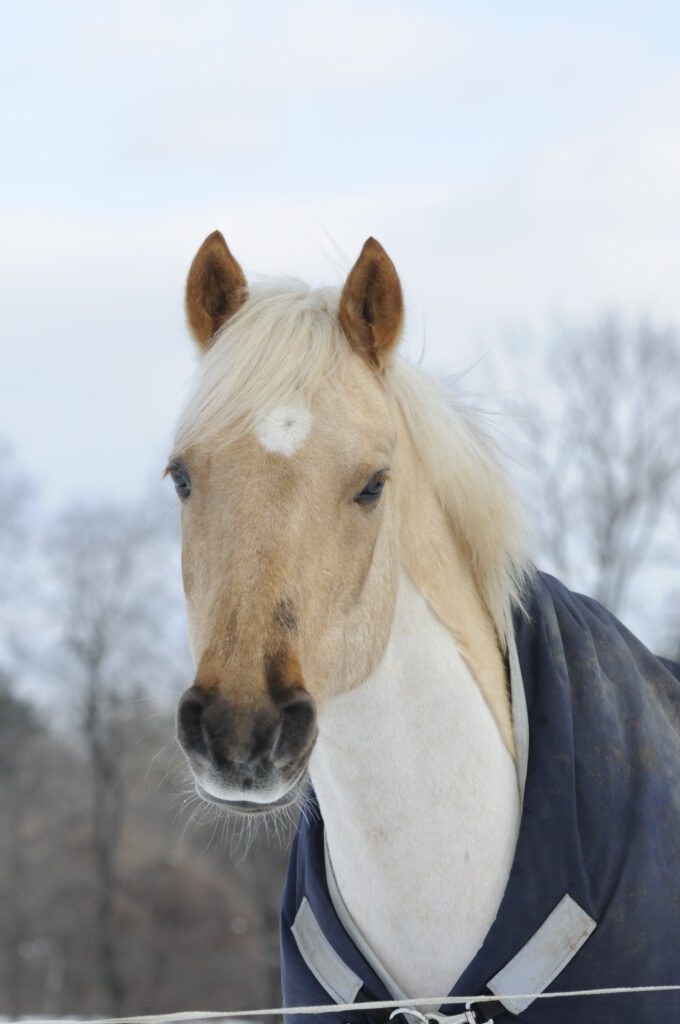You’ve trace-clipped your horse and now you’re trying to decide whether or not to blanket him. The answer depends on three factors: the type of trace clip he has, his internal thermostat and the climate.
Type of Trace Clip
My general rule of thumb is to replace the hair you’ve taken off with an equal amount of blanketing. If you’ve shaved a narrow strip across your horse’s sides, you won’t need to blanket as frequently or with as heavy a blanket as you would if you shaved a substantial amount of hair from his neck, shoulders, sides and belly.

In addition, when you blanket, try to cover areas that you have clipped. If you’ve clipped the neck or face, buy an attachable hood or stocking-like Jammies™ for him.
His Internal Thermostat
Although some people blanket according to exact temperatures, it’s best to let your horse tell you his needs: Feel his ears to determine if he’s cold (they’ll be noticeably colder if his temperature drops); slide a hand under the front of his blanket to check that he’s not hot and sweating. Do this frequently, especially when you first start blanketing him, and familiarize yourself with his internal thermostat. In cold weather, a sweaty horse can catch a chill easily, so it’s safer to underblanket than overblanket.
Climate-Based Wardrobe
The basic wardrobe of a trace-clipped horse who is stabled indoors and lives in a moderate climate should include
- a medium-weight stable blanket
- at least two inexpensive, lightweight sheets
- a lightweight, waterproof turnout blanket or rug.
If you live in a northern, colder climate, you may need even more sheets and blankets for layering. If you live in an especially cold climate and can afford it, consider buying an additional, heavyweight stable blanket and a heavier turnout rug for chillier days. The type of barn you have can also play a role in your blanketing strategy. If it’s enclosed and draft-free, you may need to blanket less than if the stalls open to the outside.
Strategy
I always use a lightweight sheet under a horse’s blanket, replacing it with a dry, clean one every week or so or whenever the horse gets damp. I layer over this sheet according to the temperature and each horse’s comfort level. For cool temperatures (below about 55 degrees F, again, depending on your horse), consider clothing him in just a sheet. If the temperature drops closer to freezing, add a layer—another sheet or a medium stable blanket. For extreme cold, you may want to add a heavier quilted blanket.
Turnout
When deciding how to blanket a horse who’s outside, evaluate the weather conditions and the temperature. Wind, precipitation and general dampness all contribute to the toll on your horse’s system. The damper and windier it is, the more heavily you should blanket your horse. If it’s sunny and your horse has access to a windbreak, it’s OK to turn him out briefly without a blanket. For longer or overnight turnout, colder temperatures and/or damper conditions, use a lightweight sheet and turnout rug. Layer under the rug as the temperature and weather conditions worsen.
Depending on the time of year you clip your horse, his blanketing needs may change as his hair grows. In general, he will need the heaviest blankets just after being clipped. As his hair grows, monitor his comfort level and adjust your blanketing routine accordingly. And, in most parts of the country, the spring temperatures should be warm enough that you won’t need to blanket anymore.
Max Corcoran was the head groom for Karen and David O’Connor for over a decade, accompanying the O’Connor Event Team to many international and team competitions, including the Olympics and World Equestrian Games. She now enjoys doing freelance work for other riders and organizations.
This article originally appeared in the October 2015 issue of Practical Horseman.

